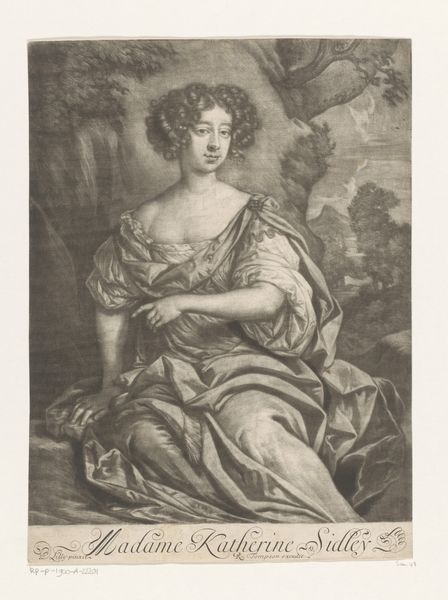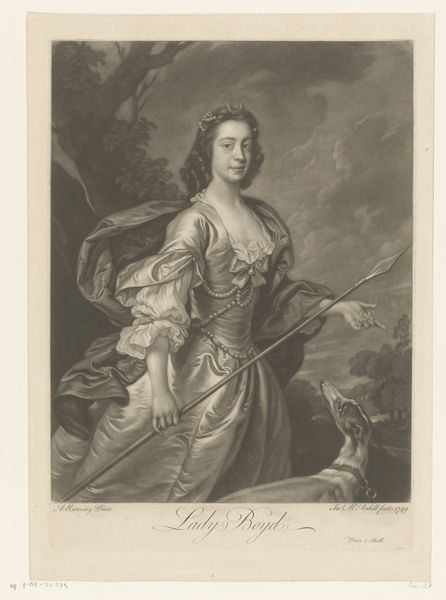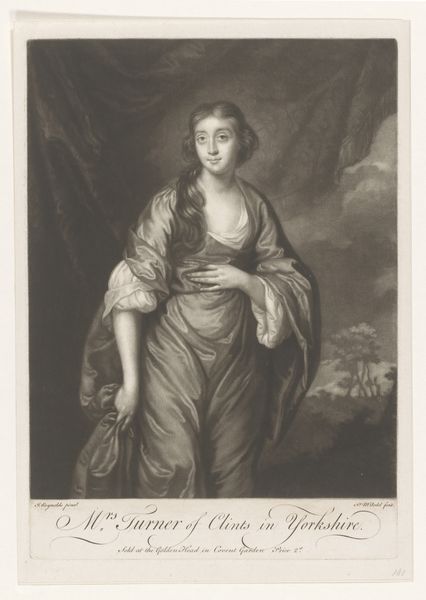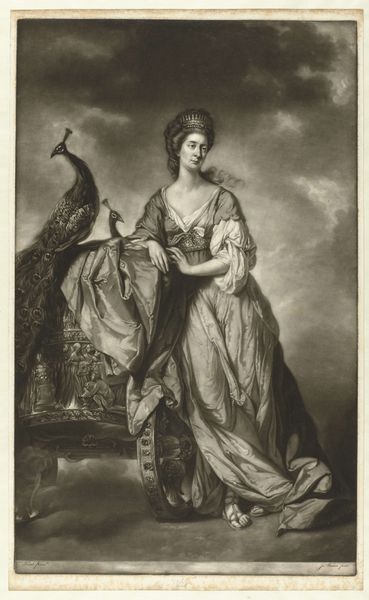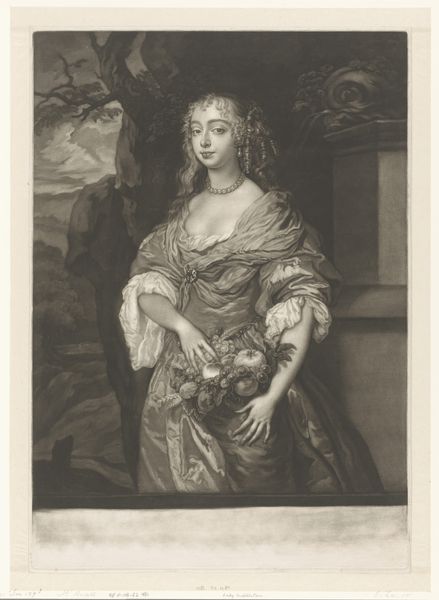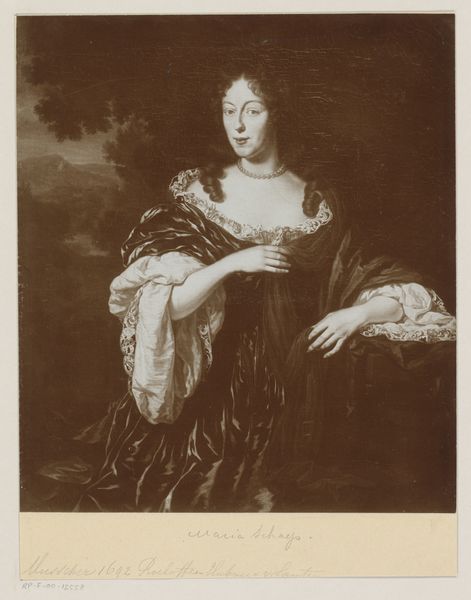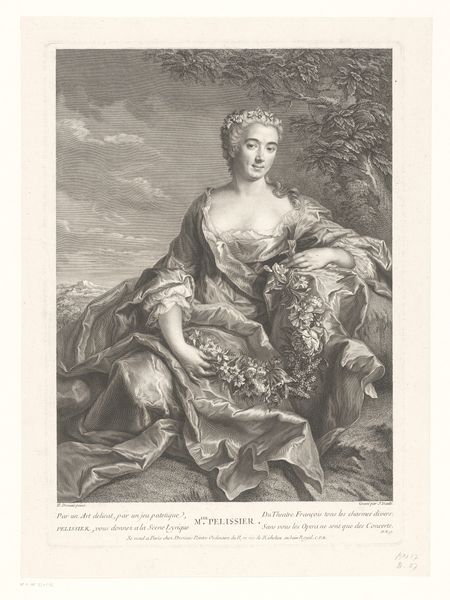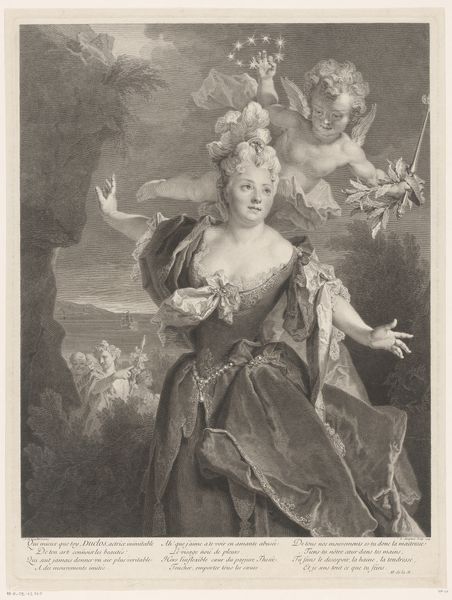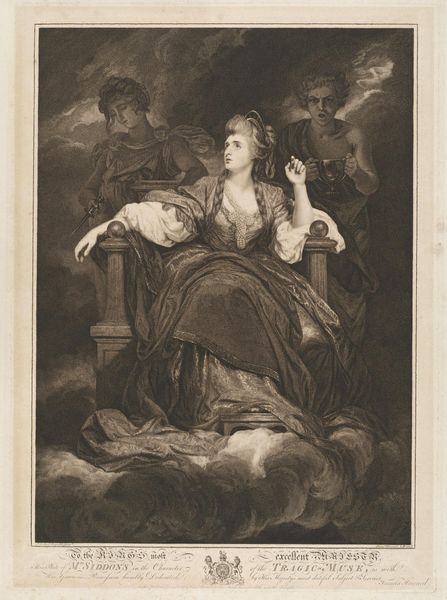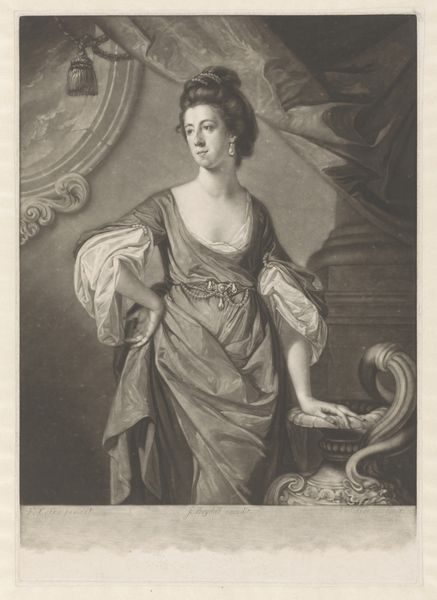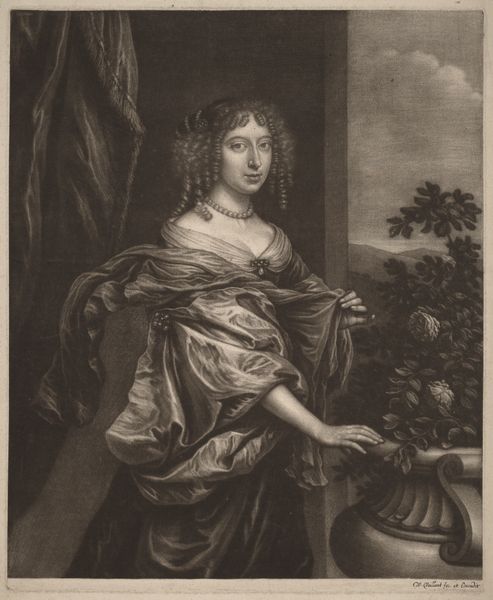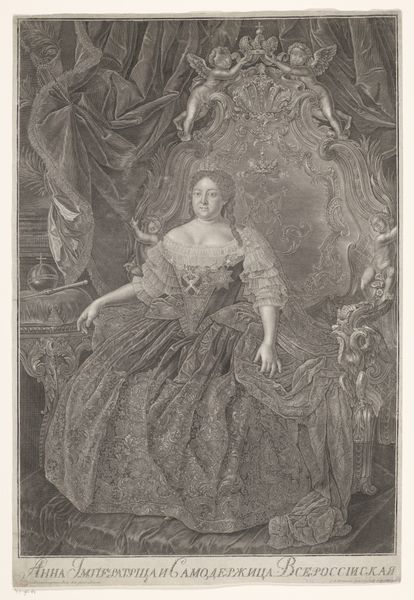
print, engraving
#
portrait
#
baroque
# print
#
charcoal drawing
#
figuration
#
history-painting
#
charcoal
#
engraving
Dimensions: height 500 mm, width 353 mm
Copyright: Rijks Museum: Open Domain
Curator: This is James McArdell's "Portret van Rachel Wriothesley" from 1758, currently held in the Rijksmuseum. It's an engraving. What's your initial impression? Editor: There's something ethereal about it. The figure seems to float, draped in fabric, with what looks like the world resting by her side. The shading is really prominent, it makes this black and white print feel monumental, like a sculpture cast in smoke. Curator: The globe speaks to her power and influence, doesn’t it? Wriothesley’s portrayal carries centuries of symbolic weight for women and power—often linked to earthly dominion. But there's also a vulnerability in her expression. Editor: I'm immediately drawn to the textures created by the engraving process. The lines must have required such precision! Looking at the details of the drapery, the fabric's weight, the highlights achieved with ink... it really does imitate painting. Curator: The history of printmaking often aimed to democratize access to art, making elite imagery available more widely. The cultural memory and status of people such as Wriothesley gained wider distribution, though the meaning would have changed for those not among her immediate circle. Editor: Exactly. It allows us to think about who had access to these images and how the material processes themselves influenced how a wider population would encounter this ideal. And what did they take away from such symbols of power? What about access to such refined objects themselves? Curator: Precisely. The image acts almost as a template. We can trace how ideas around powerful women shift or stay constant across time through imagery. Editor: Thinking about the artist’s labor itself and McArdell’s relationship to these signifiers, and what this portrait meant to people then as opposed to now... It provides interesting contrasts and insight into that time and class structure. Curator: Seeing how visual elements tie back to power structures across time is just compelling. Editor: Absolutely, seeing art not just as an object, but as a record of the labor and processes that shape how we view those very symbols of power. Fascinating.
Comments
No comments
Be the first to comment and join the conversation on the ultimate creative platform.

